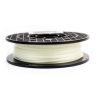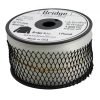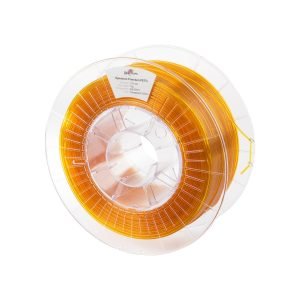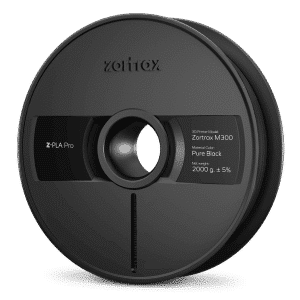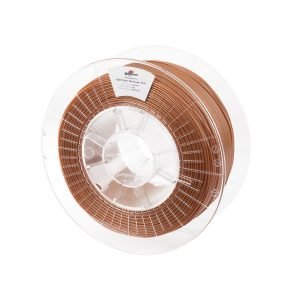Taulman Bridge Nylon – 1.75mm – 450g – Black
250,00 kr. incl. moms
Ikke på lager
Fragt fra 49,- fri fragt ved køb over 500,-
Beskrivelse
Taulman Bridge Nylon Filament – A high-strength nylon copolymer for testing purposes
Taulman3D releases a new high-strength nylon copolymer for testing by selected testers around the world. The new material is called “Bridge” because it is based on the experience of thousands of users of Nylon 618 and Nylon 645. It was developed with the help and support of our Chemicals division. The material was manufactured in-house on our extrusion lines. The filament is based on strong polymer, good adhesion to the building platform, minimal water absorption, reduced material shrinkage and a low price.
Material properties:
- Based on strong polymer
- Good adhesion on the construction platform
- Reduced water absorption
- Reduced material shrinkage
- Non-destructive testing of components
- Certified material testing
- Low price
- Material tests by a multitude of experts
A bridge
Called a “bridge” by our local testers in St Louis. This filament combines the strength of Nylon 645 with the price of current ABS and PLA thermoplastics. It gives you the flexibility to choose the best material for your 3D printing needs.
At Taulman3D we have collected the most desired properties and processed them in this material. These were in order:
- Tensile strength tested in the laboratory
- Better adhesion on the construction platform
- Affordable price
- Reduced absorption of humidity
- Non-destructive testing (opacity)
- Reduced material shrinkage
- base reference
We started from our strongest base polymer in development. We have added a proportion of Nylon 645 to meet all user requirements.
Strong adhesion on the 3D printing platform
This FFF / FDM filament offers improved adhesion on the printing platform. Those who follow the use of nylon in posts, blogs and 3DP discussion rooms know that they need to use Garolite (LE) as their printing surface. Although this works well for all taulman3D nylons it has some disadvantages. Thus, Garolit is not always easy to obtain and requires a properly cut out that fits the user’s application. Our thanks go to our chemical company, which helped us to optimize this requirement. The surface properties of most nylons are extremely slippery, which makes it difficult to adhere to the printing platform. Our chemical company was able to make minor adjustments to make the surface properties only slightly rougher, allowing them to be used as adhesives for most PVA adhesives, either full strength or diluted. Initial tests show that in some cases 3D printing was better with PVA and Bridge than with 618, so a certain dilution was used. The specific PVA used in our laboratories is a very cost-effective “ELMER’S Glue-All” White PVA.
Reduced water absorption
Next, the material’s water absorption from local moisture was reduced. While it is not possible to completely eliminate water absorption by nylon, it is possible to localize it by final processing changes on the surface. Therefore, instead of water, 3D printing creates a subtle bursting that can affect the surface texture. Bridge holds the water in the outer part. This leads to a light steam when the material is wet. The result is that Bridge needs little or no drying in winter and only needs to be warmed up in the summer months. This is a manufacturing process developed by our Material Extrusion Department and added to our existing Taulman3D processes.
Non-destructive control
The non-destructive quality control of 3D-printed parts is possible through the transparency of Bridge. As with Nylon 645, this transparency enables a visual inspection of 3D printed parts. This is a required requirement of our industrial and clinical customers. As already mentioned, parts can be printed “too fast” for some polymers. While the outside of the part looks acceptable, an object that is printed too quickly will not have an internal filler that actually adheres to the inside of the outer layers. With Bridge and Nylon 645, non-destructive quality control is a simple visual inspection.
Certified measure of strength
Taulman3D tested the properties in a test run. In this first test run, we printed test components that were sent to the test laboratories in St. Louis. A fully accredited test facility of the US government checked the filament. The laboratory reported a tensile stress PSI of 4,800 for components printed with Bridge 3D.
Low price
Taulman3D supports several industrial, commercial and clinical customers with Nylon 645, enabling us to meet all our price requirements for certain chemicals used in 645. As “Bridge” is a very similar chemical polymer to Nylon 645, we are able to meet the price requirements.
Yderligere information
| Farve | Black |
|---|---|
| Millimeter | 1.75mm |
| Type | Nylon |
| Brand | Taulman |
| Vægt | 450 gr |

